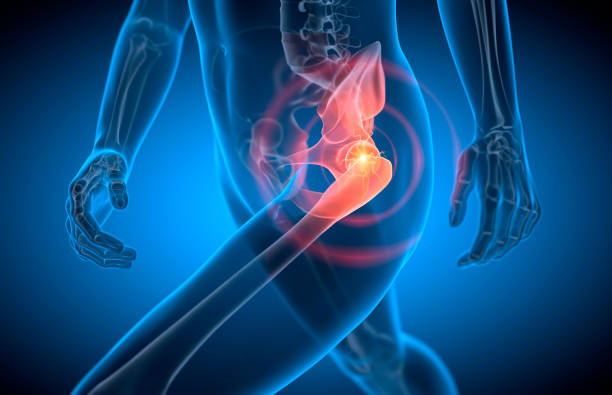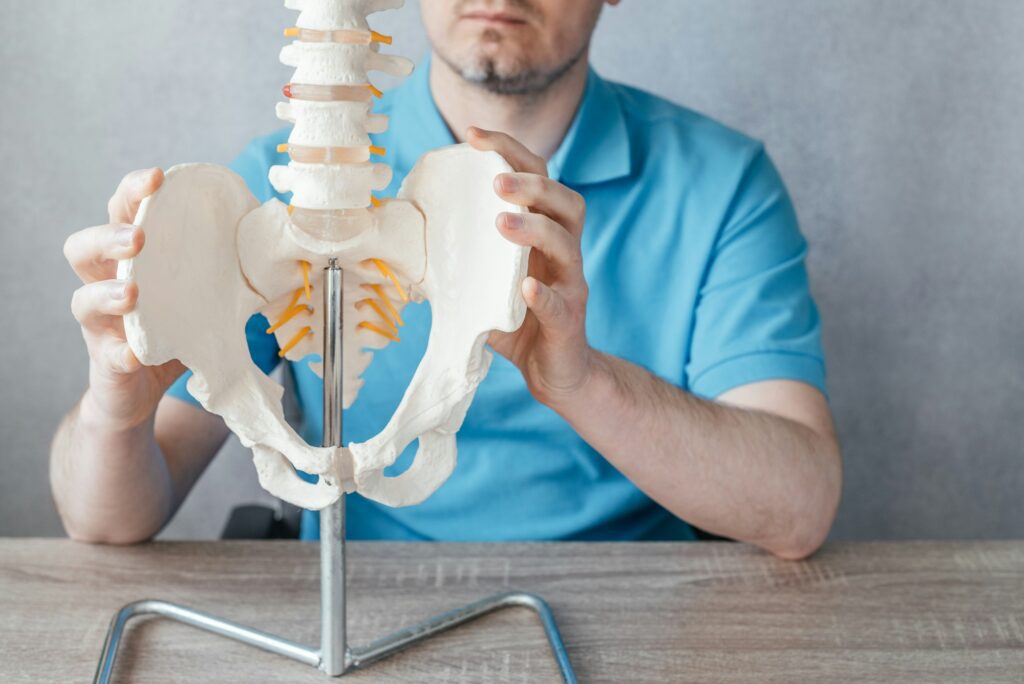At Uppal, Boduppal’s Bhuvana Hospital, we specialize in offering the highest calibre of orthopedic care, including total hip replacement (THR). For people with severe hip osteoarthritis, hip joint tuberculosis, avascular necrosis (AVN), rheumatoid arthritis, ankylosing arthritis, hip fractures, and other crippling hip joint conditions, this technique offers a glimmer of hope.
There are three typical methods to reach the hip replacement or joint:
Approaching the hip from the front is known as the anterior approach.
Approaching the hip from the side is known as the lateral approach.
The posterior approach involves reaching the hip from behind.

Usually, a single, large incision is made to access the hip through the side or back during a typical hip replacement. Using this technique, the surgeon can replace the total hip replacement deterioration with prosthetic parts. The acetabular cup, femoral head, and femoral stem are the three primary components of a hip replacement.
For whom is a total hip replacement beneficial?
If you suffer from severe discomfort, inflammation, or damage to your total hip replacement joint as a result of any of the following problems, your doctor might suggest hip replacement:
- Osteoarthritis (the most prevalent)
- Arthritis rheumatoid
- Avascular necrosis, or osteonecrosis
- damage like a hip fracture
- hip joint tumour
Process of Total Hip replacement
The diseased hip joint is removed during total hip replacement surgery, and a prosthetic implant is used. Anesthesia is given at the start of the procedure, and then the surgeon makes an incision to access the hip joint. After the injured bone and cartilage are carefully removed, the pelvic bone is fitted with a prosthetic socket. A ceramic or metal ball that slides into the socket to replace the femoral head ensures smooth movement. Our surgeons at Bhuvana Hospital employ the most recent methods and premium materials to guarantee the best results and extended implant life.

Minimally invasive replacement of the hip
The goal of minimally invasive hip replacement is to reduce the damage that surgery causes to healthy tissues, including blood vessels and muscles. Orthopedic surgeons increasingly employ minimally invasive procedures with all surgical routes to access the hip, despite the anterior hip replacement being touted as such. Your surgeon will talk about the possible best course of action.
By pushing the muscles aside and making one or two tiny incisions, the surgeon can access the total hip replacement joint when performing minimally invasive surgery. This strategy might offer benefits like:
- Reduced chance of muscular injury
- Reduced suffering
- Greater ease and speed of recovery
- Reduced hobbling
- shorter hospital stay
- Reduced risk of hip dislocation
For certain people, a minimally invasive hip replacement is not acceptable. Your surgeon will assess your suitability based on several parameters, including age, weight, and degree of fitness. How can one determine if they require a hip replacement?
Total hip replacement surgery can be necessary if hip pain negatively impacts your quality of life. The following can be a sign of a declining quality of life:
Unable to sleep soundly due to discomfort, unable to perform basic activities like dressing or climbing stairs, unable to fully engage in the enjoyable activities you do
Your physician may initially suggest additional therapies such as pain or inflammatory medications, walking assistance, joint injections, and physical therapy. Hip replacement surgery may be required to restore function and enhance quality of life if these treatments are ineffective in reducing pain and stiffness.
Expectations for Recuperation
Patients should anticipate a regimented healing schedule following surgery.
Immediate Post-Operative Care:
Patients spend a few hours under close observation in the recovery area before being transferred to a hospital room. The main priorities are blood clot prevention, wound care, and pain management.
Physical therapy:
It’s critical to mobilize patients early. The day following surgery, physical therapy starts with exercises to regain mobility, flexibility, and strength. Usually, patients are urged to stand and walk with support.
Hospital Stay:
Three to five days is the usual length of stay in a hospital. Patients are kept comfortable, and our team regularly tracks their progress.
At-Home Care: To guarantee a speedy recovery after being released from the hospital, patients must adhere to specific rules:
Wound Care: Maintain a dry and clean incision site. When changing dressings, adhere to the directions.
Take the medication that your doctor has prescribed, including anticoagulants and painkillers.
Physical Activity: Comply with the physical treatment schedule as directed. Steer clear of high-impact activities.
Lifestyle Modifications: Steer clear of activities that could strain the newly formed hip joint and use assistive aids as needed.
Postoperative Instructions
Rescheduled Appointments: Routine examinations are essential to track the healing process.
Diet and Hydration: Eat a balanced diet and drink plenty of water to speed up healing.
Preventing Infection: Keep an eye out for infection symptoms like fever, edema, or redness, and get in touch with your doctor if any appear.
Surgical Cost
The particulars of each case determine how much Total Hip Replacement surgery at Bhuvana Hospital will cost. Our consultation includes a comprehensive cost estimate that we provide to ensure openness and affordability.
Frequently Asked Questions
1. What is the duration of the total hip replacement surgery?
The procedure usually takes one to two hours.
2. How long does a total hip replacement last?
The average total hip replacement lasts 15 to 20 years, based on the degree of activity and general health.
3. When can I get back to my routine?
While complete healing might take up to a year, most patients can return to regular activities in 6 to 12 weeks.
4. Are there any potential hazards?
There are dangers associated with any surgery, such as blood clots, infection, and hip dislocation. Nevertheless, these risks are reduced with skilled management and cutting-edge surgical methods.
5. Will my procedure cause pain?
Yes, but we’ll give you the right medicine to comfort you. Most people can usually quit taking powerful medicine in a single day. Most patients administer their medication on the day of surgery using a special pump that injects it directly into their will. You and the doctor will discuss the best pain management options for the patient.
6. What dangers come with this surgical procedure?
Infection, bleeding, blood clots, and arterial and nerve injuries are among the risks. Every safety measure is implemented to reduce these dangers, such as antibiotics before and after surgery, the temporary use of anticoagulants or compression devices, and meticulous surgical methods.
7. What is the length and location of my scar?
The length of the scar will be roughly 6 to 8 inches. It will lie on your hip’s side.
You may rely on Bhuvana Hospital’s experience and kind treatment for the best total hip replacement surgery and joint replacement treatments in Uppal. You will get the best care and support available throughout your rehabilitation process because of our dedication to quality.
